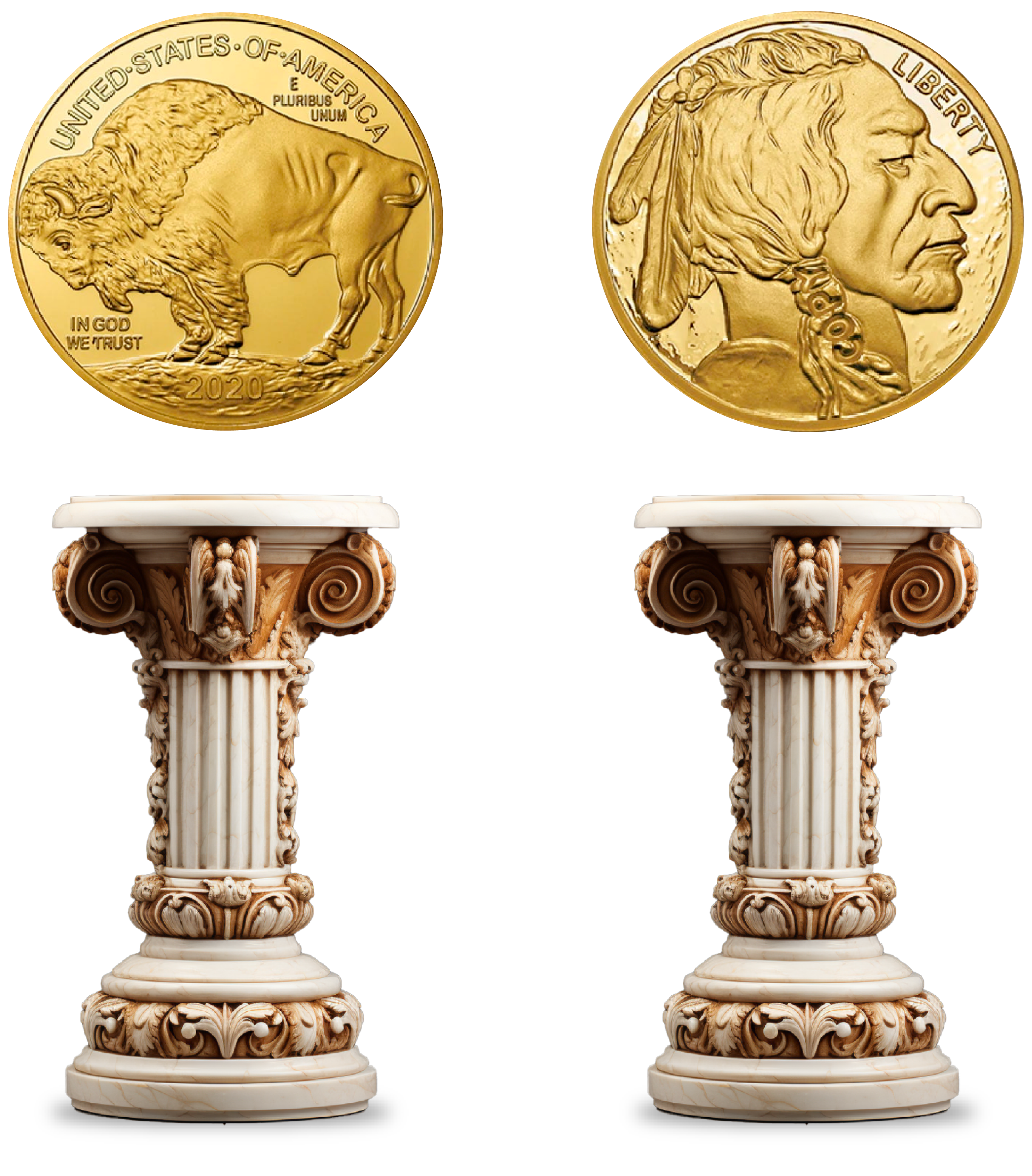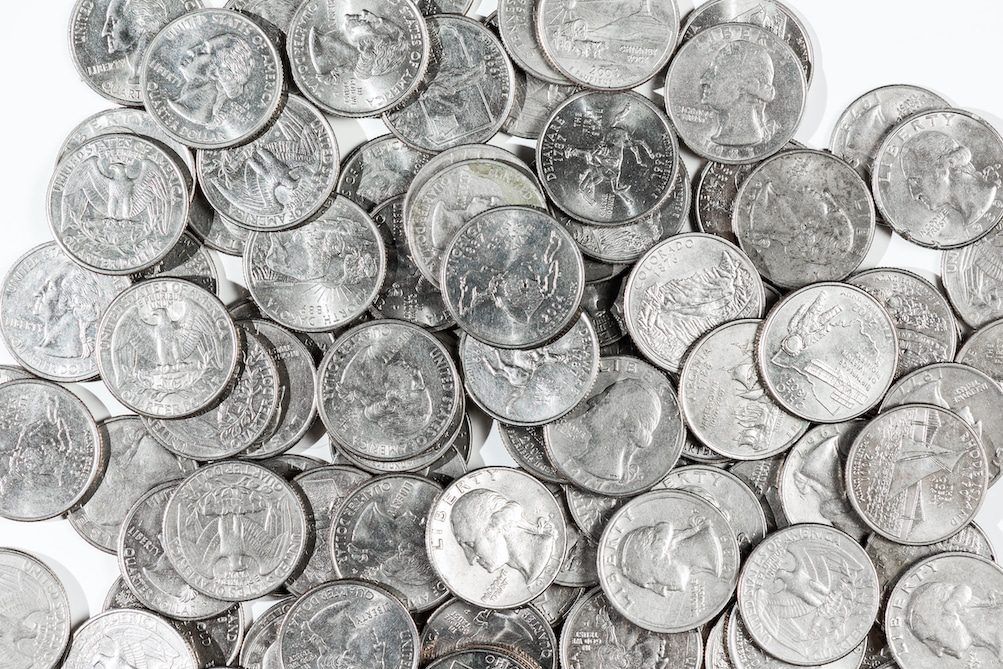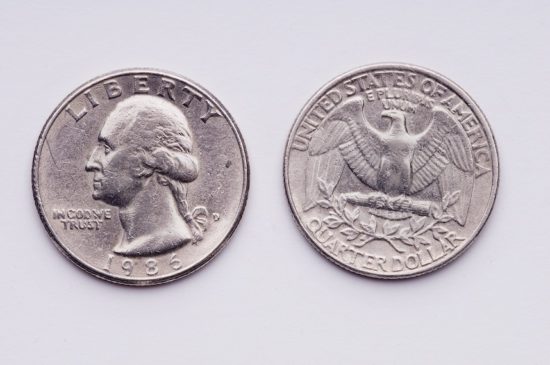

BUFFALO TRIBUTE PROOF COIN
THE HOTTEST COIN ON THE MARKET
How Much Are Silver Quarters Worth Melted Down?


While you may be hard-pressed to find a definition for “melt value” in the dictionary, it is relatively easy to define. Simply put, it is the value of a coin (or coins) based on the metals contained within them. For example, an American Silver Eagle contains one ounce of .000 fine silver. Thus, if the precious metal was currently trading at $30 an ounce, a Silver Eagle would yield approximately $30 worth of silver.
Do I Actually Need To Melt A Coin Down To Obtain Its Melt Value?
No, the composition of most coins is already known, like those shown on the home page of Silver Coin Melt Values. Thus, a coin’s melt value based on the current price of the metal within it is easily calculated. In fact, in terms of liquidity, it is much easier to obtain a coin’s melt value as potential buyers can identify it and they come to a value based on its known metallic make-up.
What About A Coin’s Face Value?
A coin’s face is another topic altogether. What is a silver quarter worth? This is the value of the coin if it were to be used for commerce transactions. For instance, state quarters struck by the United States Mint have a face value of twenty-five cents. Face values are based on the fact that the issuing government backs that coin for use to satisfy a debt within the jurisdiction of that country. Many times, however, face values are symbolic in nature such as a bullion American Silver Eagle which has a face value of one dollar but is truly worth much more since it is struck from one ounce of silver value.
How About The Coin’s Numismatic Value?
This is yet another value associated with coin collecting. This is the amount the coin may be worth to coin collectors. A coin’s numismatic value is typically based on the condition and rarity of the coin with rare ones in excellent condition commanding higher premiums than common, poor condition strikes of the same specifications.


I Have Read About 90% Silver Coins, What Are They?
90% silver coins are coins that have a composition containing 90% silver and 10% other metal(s). For the sake of U.S. coins, 90% of silver coins are typically pre-1965 circulating coins such as dimes, quarters, half-dollars, etc. which were struck from 90% silver and 10% copper. That same composition can also be found in modern silver commemorative coins with mint marks issued by the U.S. Mint as well as the Mint’s annual silver proof sets, bicentennials, Barbers, Washington Quarters, Standing Liberty, and Liberty Quarters.
What Is a “Junk Silver Coin”?
Junk silver coins are anything but junk, let’s be clear about that, to begin with. This term is typically applied to silver coins that are so common or so poor in the condition that they warrant little or no numismatic value. They have not been uncirculated. They can still, however, have a tremendous melt value associated with them based on the troy ounces of silver U.S. quarters they contain. Dealers typically bundle the “junk silver coins” in bags or rolls to be sold to investors or collectors for a price based on their silver content.
Is There More To Know About Junk Silver Coin Bags?
Obviously, and this FAQ will barely touch the surface of all there is to learn about Junk Silver Coin Bags. A bit of history and background will help, however. First of all, traditionally, dealers would bundle enough junk silver coins in a bag to equal a face value of $1,000. Because the United States Mint struck these older silver coins with a proportional amount of silver depending on the denomination of each coin, these $1,000 face value bags would equal approximately 715 ounces of silver (allowing for wear). Thus, it was easy to calculate the melt value of each bag of Washington silver quarters based on the 715 ounces no matter what the actual make-up of individual coins inside was.
In later years, and with the increasing price seen in precious metals, it is not uncommon to find junk silver coin bags with smaller face values to appeal to a broader market.
How Much Should I Expect To Spend For Junk Silver Coins And Bags?
This amount is extremely fluid based on factors like the current silver market and demand. The price of silver is easily attainable by looking at the world markets via online financial sites as well as precious metal sites. Take the amount of silver expected to be in each bag’s times the current spot price and you will have an idea of the bag’s melt value. Expect to pay slightly more in quarter value for quarter dollars than that if you are looking to buy, and expect to receive slightly less if you are looking to sell.
As mentioned, however, demand also plays a part. This is a component known as Bid/Ask in coin collecting. At times, it can be hard for dealers to obtain sufficient quantities of junk silver coins. During these times, the coin dealer will have to pay a larger premium over spot to purchase them, and will, in turn, charge more to sell them.
What Are Silver Sets?
Silver sets containing rare coins struck from any composition of the precious metal. It refers to sets released by the United States Mint. This includes those sets issued pre-1965 when standard calculating dimes, quarters, half-dollars, and dollar coins were struck from 90% silver minting. It also includes those sets issued since 1965 containing different percentages of the precious metal.
What Do Experts Consider As Fine Silver?
The procedure for grading silver purity is known as millesimal fineness and is expressed in decimal numbers. Any silver coin or silver bullion used for trade or investment must be 99.9% pure or .999. Investment-grade pure silver is approved with an authentication confirming its purity. Silver coins produced for general use contain silver with a purity of between 80-90%.
Each silver quarter has a different value. The price depends on the purity of the silver and the year the coin is produced. Before 1965, all dimes in the U.S. were made of 90% silver and 10% copper. In 1965, the Coinage Act changed the structure to reduce the silver content. Quarters were replaced with a composition that was 75% copper and 25% nickel.

